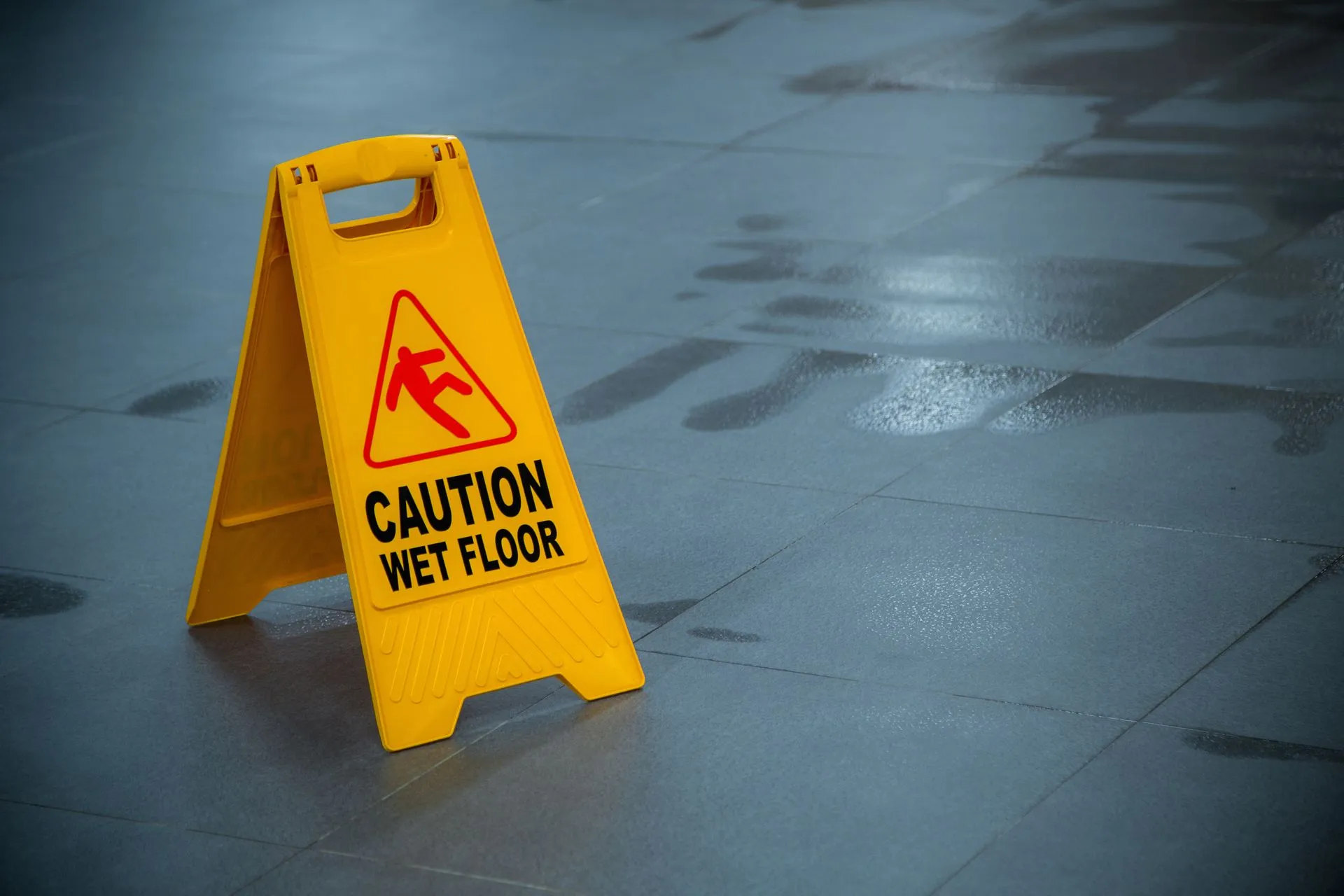
A slip and fall accident can happen almost anywhere, including your own home. Legal problems begin when you slip and fall on someone else’s property (such as at a grocery store, amusement park or someone else’s private residence) and suffer injuries. If the property owner, management or staff members failed to ensure the property is safe for permitted occupants, they may be held liable for your injuries and damages.
However, proving your slip and fall case must be substantiated with concrete and compelling evidence. There are also a handful of important exceptions that can complicate your case. It may be necessary to:
- Have documentation proving you were at the property when you claim the injury occurred
- Establish the property owner reasonably should have been aware of the hazard and had time to fix it prior to your injury
- Prove you were being reasonably conscious of your surroundings
If you believe you have a valid slip and fall case but you’re not sure where to begin the process of filing a claim, consulting with a personal injury lawyer experienced with handling slip and fall cases may be a good idea.
Proving Your Claim
In an Ohio slip and fall case, you generally need to establish four key elements to prove your claim. These elements are:
Duty of care: You must demonstrate the property owner or occupier owed you a duty of care. This means that they had a legal obligation to maintain their property in a reasonably safe condition or warn visitors of any known hazards.
Breach of duty: You must show that the property owner or occupier breached their duty of care. This typically involves proving they failed to take reasonable steps to prevent or address the hazardous condition that caused your slip and fall.
Causation: You must establish a causal connection between the property owner’s breach of duty and your slip and fall accident and injuries. In other words, you need to demonstrate that the hazardous condition directly caused your injuries.
Damages: Finally, you must provide evidence of the damages you suffered as a result of the slip and fall incident. This can include medical expenses, lost wages, pain and suffering and any other losses or harm you experienced due to the accident.
Slip and Fall Case Scenario #1
Let’s consider a scenario where you visit a grocery store and slip and fall on a recently mopped floor without any warning signs or barriers. You suffer a fractured wrist as a result of the fall.
The grocery store’s failure to place warning signs or barriers after mopping the floor can be seen as negligence. They didn’t take proper precautions to prevent accidents or inform customers about the potential hazard.
This lack of warning signs caused you to accidentally slip and fall and suffer an injury. Your medical records and bills can provide evidence of the extent of your injury and the associated expenses.
In this particular example, the validity of the slip and fall case lies in establishing
- You were there (having witnesses who can corroborate your version of events can be extremely beneficial – this is also why it’s vital to report slip and falls immediately)
- The grocery store breached its duty of care by not putting up wet floor signs, resulting in hazardous conditions and your subsequent injury
- You have medical bills, past pay stubs and proof that you missed work due to your injuries
By demonstrating negligence and connecting it to the harm suffered, you would have a strong case for seeking compensation from the grocery store for your medical expenses, pain and suffering and other applicable damages.
Slip and Fall Case Scenario #2
Let’s consider another scenario where you visit a shopping mall and claim you slipped and fell in one of the common areas, resulting in a sprained ankle.
To have a valid slip and fall case, it is necessary to establish that the property owner or occupier was negligent in maintaining the premises. In this case, if the mall had taken reasonable measures to ensure the safety of their common areas, such as regular inspections, prompt cleanup of spills and appropriate maintenance, it would be difficult to prove negligence.
Moreover, if you were distracted by your phone or not paying attention to where you were walking, and there’s no documented evidence of existing hazardous conditions, it could be challenging to prove that the mall was primarily responsible for your injury.
In this example, it may be difficult to prove negligence on the part of the mall.
Discuss Your Ohio Slip and Fall Case with a Slip and Fall Attorney
If you’ve suffered injuries in a slip and fall accident on someone else’s property, contact the Buckeye Law Group today.
We’ll take the time to thoroughly examine the circumstances surrounding your case and help you understand the factors that may influence the value and outcome of your personal injury claim.
Our skilled and accomplished personal injury attorneys have a deep understanding of premises liability laws and are here to offer expert legal guidance and representation.
To discuss your case for free, call 1-800-411-PAIN.
Suing for a Loved One’s Death After a Trucking Accident
Understanding Wrongful Death Claims Involving Commercial Trucks Losing a loved one in a trucking accident is one of the most devastating events a family can experience. Alongside overwhelming grief, families
Trucking Logs and Black Boxes: What Evidence Can Be Used?
Why Evidence Is Critical in Truck Accident Claims Truck accident cases are far more complex than standard car crashes, largely because of the amount of technical evidence involved. When a
Slip and Fall Accidents: When Property Owners Fail to Keep You Safe
Why Slip and Fall Accidents Are Serious Personal Injury Cases Slip and fall accidents are often dismissed as minor or unavoidable, but the reality is very different. These incidents can
Slips, Trips, and Falls in Stores and Businesses: Your Legal Rights
Why Retail Slip and Fall Accidents Happen Retail stores, restaurants, and commercial properties experience constant foot traffic. When businesses prioritize speed or profits over safety, dangerous conditions can quickly lead
Obstetrical Malpractice and the Risk to Mothers and Babies
Understanding the Hidden Dangers in Modern Maternal Care Why Obstetrical Errors Are Still Happening Today Most expecting parents trust their medical teams completely. They assume that prenatal appointments, labor monitoring,
Can You Sue for Injuries During Pregnancy or Labor?
What Expectant Mothers Should Know About Medical Negligence How Pregnancy and Labor Injuries Typically Occur Pregnancy and childbirth dramatically change a mother’s body, and complications can arise even in low-risk
When Numbness Turns Into a Lifetime Injury
Understanding Nerve Damage Caused by Medical Negligence How a Simple Procedure Can Lead to Permanent Damage A routine medical procedure should never leave a patient with debilitating complications. Unfortunately, many
Nerve Injury After Medical Procedures—What You Should Know
When Numbness Turns Into a Lifetime Injury Why Post-Procedure Nerve Damage Deserves Immediate Attention A nerve injury after a medical procedure is far more than an uncomfortable side effect—it can
Injured as a Passenger on a Motorcycle—What Are Your Rights?
Passengers Have Strong Legal Protections Under Ohio Law Many people believe motorcycle passengers have limited legal options after a crash—but that’s completely false. In Ohio, injured motorcycle passengers almost always
Understanding Liability in Multi-Vehicle Motorcycle Wrecks
Why Multi-Vehicle Motorcycle Crashes Are So Complex When a motorcycle is involved in a crash with multiple vehicles, determining who is responsible becomes significantly more complicated. Unlike two-car collisions—where fault
